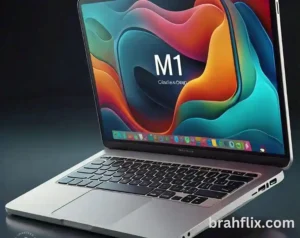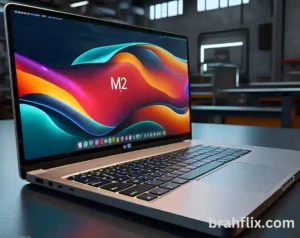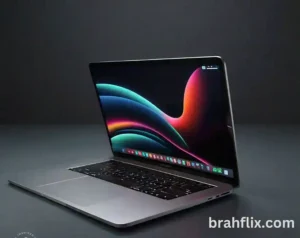Introduction
In the ever-evolving world of technology, Apple’s M1 and M2 chips have marked significant milestones in the realm of personal computing. With the introduction of the M2, Apple has brought forth a new wave of innovation and performance enhancements. This article delves into the detailed comparison of Apple M1 vs M2 chip, exploring their performance metrics, efficiency, and other critical features to help you understand which chip suits your needs best.
Key Takeaways
- The Apple M2 chip offers enhanced performance and efficiency compared to the Apple M1 chip.
- Significant improvements in GPU and CPU capabilities make the M2 chip suitable for demanding tasks.
- Understanding the differences can guide you in choosing the right Apple device for your needs.
1. Overview of Apple’s Silicon Journey
Apple’s transition from Intel processors to its own Apple Silicon began with the M1 chip. This shift was a major strategic move aimed at enhancing performance and integrating hardware with software seamlessly. The Apple M1 debuted in November 2020, marking a new era of high-efficiency computing.
The Apple M2 chip, unveiled in June 2022, is the next step in this evolutionary process. Designed to build upon the success of its predecessor, the M2 introduces several advancements, positioning itself as a powerful upgrade.
Apple M1 vs M2 chip comparison requires understanding these fundamental advancements:
- M1 Chip: Initial leap in performance with a focus on energy efficiency.
- M2 Chip: Refines and extends these capabilities, introducing improved GPU performance and enhanced memory bandwidth.
2. Performance Benchmarks and CPU Architecture
When comparing Apple M1 vs M2 chip, one of the most significant aspects is their CPU performance. The M1 chip is equipped with an 8-core CPU, consisting of 4 high-performance cores and 4 high-efficiency cores. This configuration was groundbreaking for its time, offering a remarkable blend of power and efficiency.
The M2 chip advances this architecture with enhancements:
- CPU Cores: The M2 maintains the 8-core structure but with improvements in clock speeds and architecture. The high-performance cores are designed to handle more intensive tasks, while the high-efficiency cores provide better power savings.
- Performance Gains: According to Apple’s benchmarks, the M2 chip shows up to 18% improvement in CPU performance over the M1, making it a solid choice for demanding applications.
Table 1: CPU Specifications
| Chip | High-Performance Cores | High-Efficiency Cores | Total Cores | CPU Performance Improvement |
|---|---|---|---|---|
| M1 | 4 | 4 | 8 | – |
| M2 | 4 | 4 | 8 | Up to 18% |
3. GPU Enhancements: Graphics Power
Graphics performance is another crucial aspect of the Apple M1 vs M2 chip comparison. The M1 chip features a GPU with up to 8 cores, providing significant improvements in graphics processing and visual performance compared to previous Intel-based Mac systems.
The M2 chip builds on this foundation:
- GPU Cores: The M2 chip increases the GPU core count to up to 10, offering enhanced graphics capabilities. This allows for better performance in graphics-intensive applications, such as video editing and gaming.
- Performance Gains: Apple claims that the M2 chip’s GPU delivers up to 35% better graphics performance compared to the M1, making it an ideal choice for users who require superior visual processing power.
Table 2: GPU Specifications
| Chip | GPU Cores | GPU Performance Improvement |
|---|---|---|
| M1 | 7 or 8 | – |
| M2 | Up to 10 | Up to 35% |
4. Memory and Storage: Bandwidth and Capacity
Memory performance is another area where the Apple M1 vs M2 chip shows notable differences. The M1 chip supports unified memory architecture with a maximum of 16GB of RAM and offers impressive memory bandwidth of 68.25 GB/s.
The M2 chip advances this:
- Memory Capacity: The M2 supports up to 24GB of unified memory, providing more headroom for multitasking and memory-intensive applications.
- Memory Bandwidth: With improved memory bandwidth of 100 GB/s, the M2 chip facilitates faster data access and processing, enhancing overall system responsiveness.
Table 3: Memory Specifications
| Chip | Max Memory Capacity | Memory Bandwidth |
|---|---|---|
| M1 | 16GB | 68.25 GB/s |
| M2 | 24GB | 100 GB/s |
5. Energy Efficiency and Battery Life
Energy efficiency is a hallmark of Apple’s silicon, with both the M1 and M2 chips offering significant improvements over traditional processors. The M1 chip introduced substantial gains in battery life and energy efficiency, thanks to its advanced 5nm process technology.
The M2 chip continues this trend:
- Efficiency Gains: The M2 chip benefits from an optimized 5nm process, which enhances performance per watt, leading to longer battery life and improved thermal management.
- Battery Life: Users can expect better battery performance in devices equipped with the M2 chip, making it suitable for prolonged use without frequent recharging.
6. Impact on Device Performance and Use Cases
The performance improvements in the Apple M2 chip make a notable difference in various use cases:
- Professional Workflows: For users engaged in professional tasks like video editing, 3D rendering, and software development, the M2 chip offers faster processing and enhanced graphics capabilities.
- Everyday Tasks: While the M1 chip provides excellent performance for everyday tasks, the M2 chip’s additional power can handle more demanding applications with ease.
Quote: “The M2 chip represents a significant leap forward in Apple’s silicon strategy, offering enhancements that benefit both professional and everyday users,” says Apple’s Senior Vice President of Hardware Technologies.
7. Software Optimization and Compatibility
One of the key factors in the Apple M1 vs M2 chip debate is software optimization. Both chips benefit from Apple’s macOS, which is designed to maximize performance and efficiency across its hardware.
- macOS Optimization: Apple continuously updates macOS to optimize performance for new hardware. Both the M1 and M2 chips benefit from these updates, ensuring smooth performance across a wide range of applications.
- Compatibility: Applications running on the M1 chip are generally compatible with the M2, but the M2’s enhanced capabilities can offer improved performance in optimized applications.
8. Price and Value for Money
Price is always a consideration when evaluating Apple M1 vs M2 chip options. Devices featuring the M2 chip generally come at a higher price point due to the advanced technology and performance improvements.
- Cost Comparison: Devices with the M1 chip are often more affordable and still offer excellent performance for most users.
- Value for Money: For users who need the extra performance and capabilities, investing in an M2-equipped device may provide better value in the long run.
Recommendation: If your work demands higher performance, the M2 chip is worth the investment. For general use, the M1 chip remains a strong contender.
9. Future-Proofing and Longevity
When choosing between the Apple M1 vs M2 chip, considering future-proofing is essential:
- M1 Chip: While still a powerful option, the M1 may start to show its age as software and applications become more demanding.
- M2 Chip: With its advanced features and higher performance capabilities, the M2 is likely to remain relevant for a longer period, providing better longevity and support for future applications.
FAQs
1. What are the main differences between the Apple M1 and M2 chips?
The main differences include improved CPU and GPU performance in the M2 chip, enhanced memory capacity and bandwidth, and better energy efficiency compared to the M1 chip.
2. Which chip offers better battery life, the M1 or M2?
Both chips offer excellent battery life, but the M2 chip benefits from enhanced energy efficiency, which can result in longer battery performance in devices.
3. Are applications compatible with both M1 and M2 chips?
Yes, applications that run on the M1 chip are generally compatible with the M2 chip. The M2 chip may offer improved performance in applications optimized for its enhanced capabilities.
4. Is it worth upgrading from an M1 to an M2 device?
If you require higher performance for demanding tasks or want the latest technology, upgrading to an M2 device can be beneficial. For general use, the M1 chip remains a strong choice.
5. How do the M1 and M2 chips compare in terms of graphics performance?
The M2 chip offers up to 35% better graphics performance compared to the M1 chip, thanks to its enhanced GPU capabilities and additional cores.
Conclusion
The Apple M1 vs M2 chip comparison highlights significant advancements in performance, graphics, and efficiency. The M2 chip offers notable improvements over the M1, making it a compelling choice for users with higher performance needs. However, the M1 chip remains